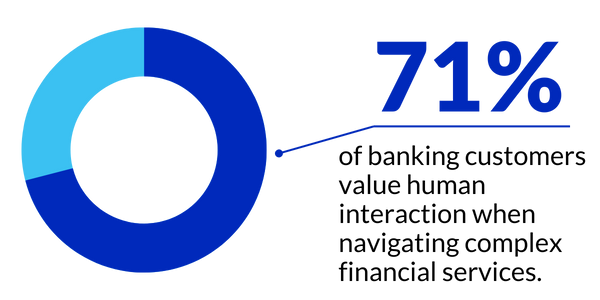Why Community Bank Fintech Partnerships are Essential
The event’s goal was clear: to foster open, trust-based conversations between community banks and their technology partners, promoting smooth innovation and encouraging a culture of adaptability throughout the entire organization.
Implementing Fintech Solutions in Community Banks
Mass Fintech Hub and Mass Bankers Association’s joint panel, “From Friction to Functionality,” brought together leaders from Massachusetts community banks, fintech founders, and banking association executives, hosted in M&T Bank’s five-star Winthrop Center office space.
Below, I’ve recapped key insights organized around the important questions driving community bank innovation today:
How Do Community Banks Find Time to Innovate Amid Competing Priorities?
The panel opened with a frank discussion about the hurdles to innovation. Marco Bernasconi, Chief Operating and Innovation Officer at Country Bank, called out a common struggle:
“We need to get past decision paralysis. The pandemic showed how nimble banks can be in just days.”
Community banks have proven they can move fast when it matters. The challenge now is to make that agility part of everyday culture, not just a crisis response.
Why Are Tech Partnerships More Important Now Than Ever?
Ashley Eknaian, Chief Digital Officer at Eastern Bank, put it simply:
“Today’s customers want seamless, digital-first experiences, and banks are under pressure to deliver. But as Marco noted, digital transformation is about more than customer-facing tools: It’s about gaining efficiency, not losing jobs. Investing in your talent.”
I often think of the end customer as the primary driver for innovation, so it was different to hear the panel emphasize the importance of serving employees as well. To retain talent and boost efficiency, innovation is essential. While customer-facing innovations may be flashier, the panel highlighted that they are ineffective without a smooth and efficient back office.
Adding to the urgency for bank and fintech partnerships, Brooke Ybarra, SVP of Innovation and Strategy at the American Bankers Association, added:
“You have to innovate, or others will. We’re past fintechs as competitors. They are partners now, and it’s a matter of choosing which one.”
Stephen Dow, CEO and Co-Founder at Monit, offered a fresh perspective:
“Banks are data companies, not software companies. They’ve been outsourcing tech for decades now.”
The panel agreed that fintech companies are no longer outsiders but essential collaborators. Partnerships help banks meet rising customer demands while improving both customer and employee experiences.
How Can Community Banks Implement Fintech Solutions Without Overwhelming Non-Technical Teams?
For many banks, the biggest barrier to innovation isn’t technology, it’s people. Ashley advised:
“Take a problem and solve it. You don’t need to overwhelm with big investments all at once, but you need to try.”
Brooke cautioned that:
“Banks need focused innovation. Otherwise, they risk spreading themselves thin.”
Marco emphasized the importance of leadership:
“Leadership needs to fully embrace and support change. Start with a yes, and ask how we get there.”
Stephen added that while excitement is important, leaders should:
“Stay slightly involved in the tech.”
This means leaders shouldn’t just delegate digital projects, they should stay engaged to guide, support, and troubleshoot as needed.
The panel’s advice: start small, focus on solving specific problems, and ensure leadership is visibly supportive of innovation. This approach helps reduce overwhelm and build momentum. Additionally, banks should adopt a mindset of “starting with yes” and then ask how to get there rather than putting up immediate defenses.
How Do Banks Balance Innovation with Risk and Compliance?
The panel didn’t shy away from the realities of risk and regulation. Brooke reminded everyone that banking and lending are inherently risky and regulatory systems exist for good reasons:
“Banking and lending are inherently risky, and regulatory systems exist for good reasons. Managing uncertainty is challenging but critical. Uncertainty is becoming cliché to talk about, but it’s real. The pendulum is swinging and it’s hard to manage.”
Ashley and Marco highlighted the human side of innovation. Ashley started:
“Innovation requires trust and faith to try something new. It’s scary for veteran employees, so people need to see that leaders are fully bought in.”
Marco agreed:
“Enable your team to feel comfortable trying and failing fast, to then pivot.”
One of the most valuable lessons I took from the panel was the importance of making compliance a core part of the innovation process, rather than treating it as an afterthought. By involving compliance teams from the very beginning (during ideation and design), banks can avoid costly rework and ensure that new solutions meet regulatory standards right from the start.
The panel also highlighted how automation platforms can streamline compliance tasks like transaction monitoring, KYC/AML checks, data protection, and documentation freeing up teams to focus on higher-value work.
Another key takeaway was the value of treating regulators as partners instead of obstacles. Open dialogue, participation in regulatory sandboxes, and seeking feedback on new products or technologies can clarify expectations and reduce risk when bringing innovations to market. Early collaboration with regulators not only builds trust but also paves the way for smoother, more successful launches.
What Are Some Practical Tips for Community Banks Looking to Innovate?
- Start Small: Focus on one problem at a time rather than chasing every new trend.
- Build a Framework: Align innovation efforts with your bank’s strategic objectives to avoid overwhelm.
- Stay Informed: Be aware of emerging technologies, even if you don’t adopt them immediately.
- Collaborate: Treat fintechs as partners and choose those who align with your culture and goals.
- Leadership Engagement: Leaders must be visibly involved and supportive to drive meaningful change.
Final Thoughts: The Human Element in Innovation
I’m often inspired by how community bankers prioritize relationships not only with their customers but also with their technology partners. Trust and personal connection remain at the core of successful innovation in community banking.
Leaders like Marco emphasize the importance of exposing teams to a wide variety of fintech solutions, whether through regional events or in-office discussions. This approach fosters continuous learning and adaptability, helping banks stay agile in a rapidly evolving landscape.
Events like Mass Fintech Hub, MassChallenge, Fintech Sandbox, and Alloy Labs offer valuable opportunities to build relationships, learn about new technologies, and collaborate across the industry.
A sincere thanks to the panelists: Brooke Ybarra, Marco Bernasconi, Stephen Dow, and Ashley Eknaian, plus the wonderful moderator Kathleen Murphy, CEO of Mass Bankers Association for sharing their valuable insights. A special thank you to Mass Fintech Hub and the Massachusetts Bankers Association for organizing this impactful event and fostering collaboration across the community banking and fintech ecosystems.
Building Strong Partnerships with GoDocs
To learn about how GoDocs can support your lending innovation or to connect about partnerships, please contact us or find us at upcoming events:
Mass Bankers Association Annual Convention 2025:
May 1-4, Naples, FL | Schedule time with GoDocs at the convention
Mortgage Bankers Association’s Commercial/Multifamily Finance Servicing and Technology Conference 2025:
May 18-21, Hollywood, FL | Schedule time with GoDocs at the conference
Marketing Specialist








